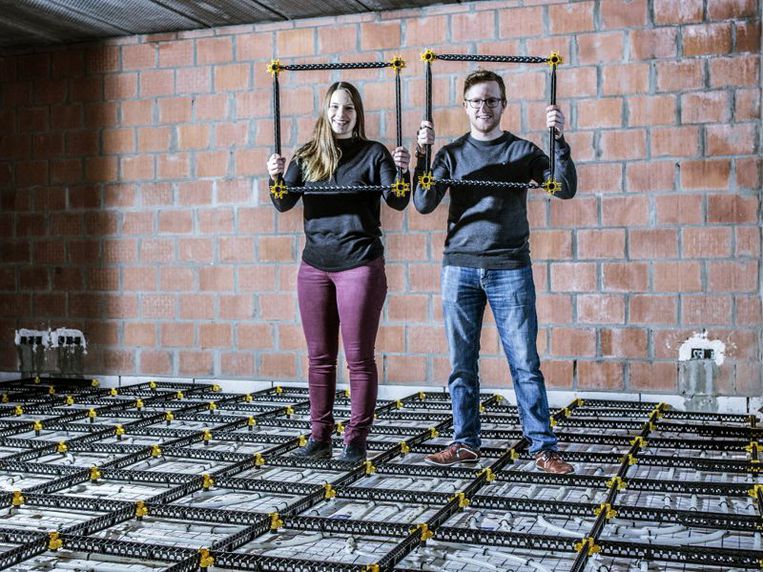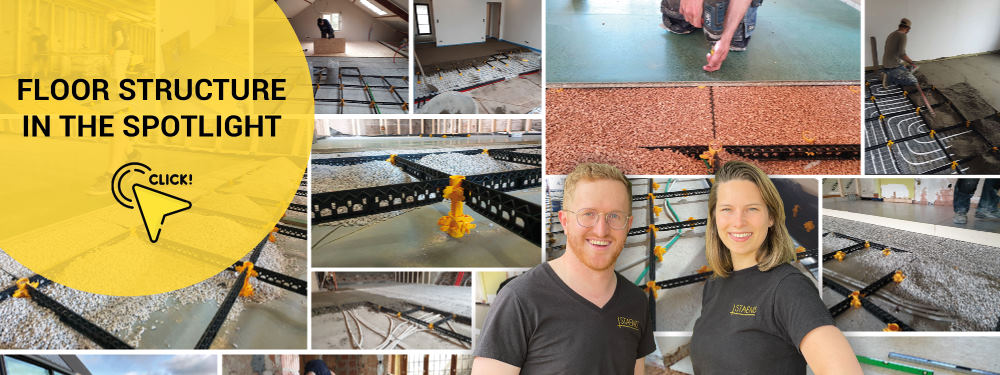We just made the front page of HLN | Het Laatste Nieuws!
By Staenis | 13/02/2018
Long wait for your screeder? Why not try it yourself! The West Flemish start-up Staenis is launching a 'screed grid' on the market and promises professional quality tailored to DIYers. The construction site Livios spoke with developers Tom Verstaen and Daisy Bohyn. "With our system, you can save a lot of money."
How does the screed grid work exactly? “You place a single row of plastic grids, adjust them to the correct height, fill them with screed, and then level the screed on top of the grid. The grid remains permanently in place and ensures a flat and crack-free screed floor. You also no longer need expansion joints,” says Tom Verstaen, who was national Tiler Champion in 2017.
Screed for DIYers
“The big advantage is that now anyone can install screed themselves,” says Daisy Bohyn, interior architect and product developer. “Until now, DIYers didn’t dare to start because it’s difficult to get screed perfectly level. With the StaenisGrid, that’s no longer a problem. Because the grid is divided into sections of 0.25 m², the screed remains perfectly level both during installation and drying. Moreover, you can combine the system with underfloor heating.”
… and professionals
“For professionals, it is an advantage that they gain a handy tool. This allows screed companies to more easily deploy less experienced employees for the installation. The StaenisGrid helps them deliver quality.”
Save money
“Especially for small surfaces such as a kitchen or bathroom, it is expensive to hire a professional screeder. For private individuals, the average guideline price is 16.50 euros per square meter. So you can save quite a bit of money,” says Daisy.
... but also time
There are only about 350 professional screed companies in Flanders. Waiting times can therefore increase. “With the StaenisGrid, laying screed is just as fast as the traditional method. We still want to design tools that will make it even faster. But that is for the future,” concludes Daisy.
View the article here








